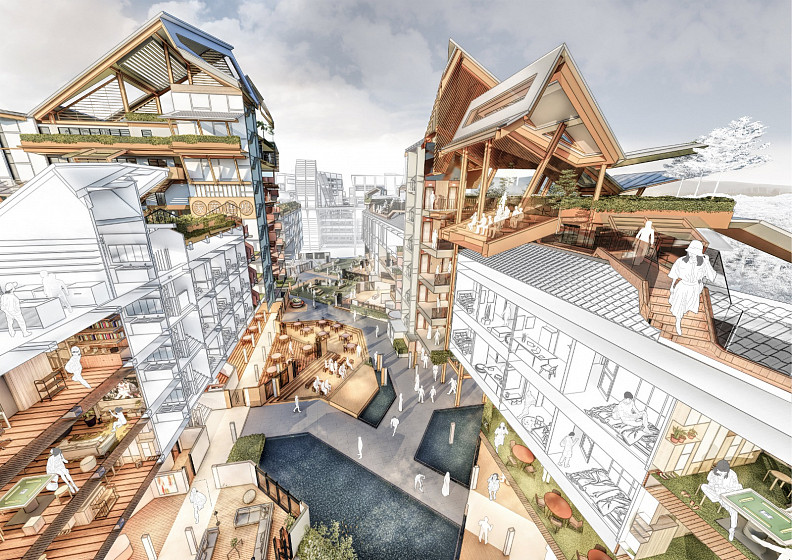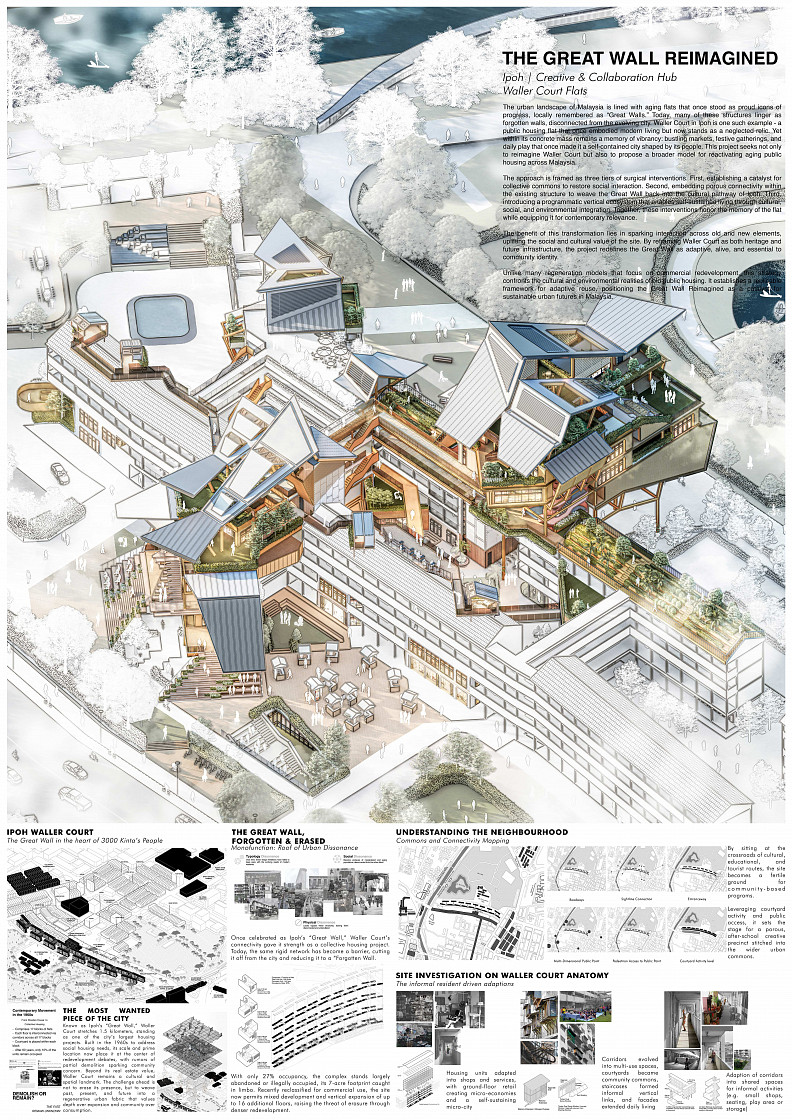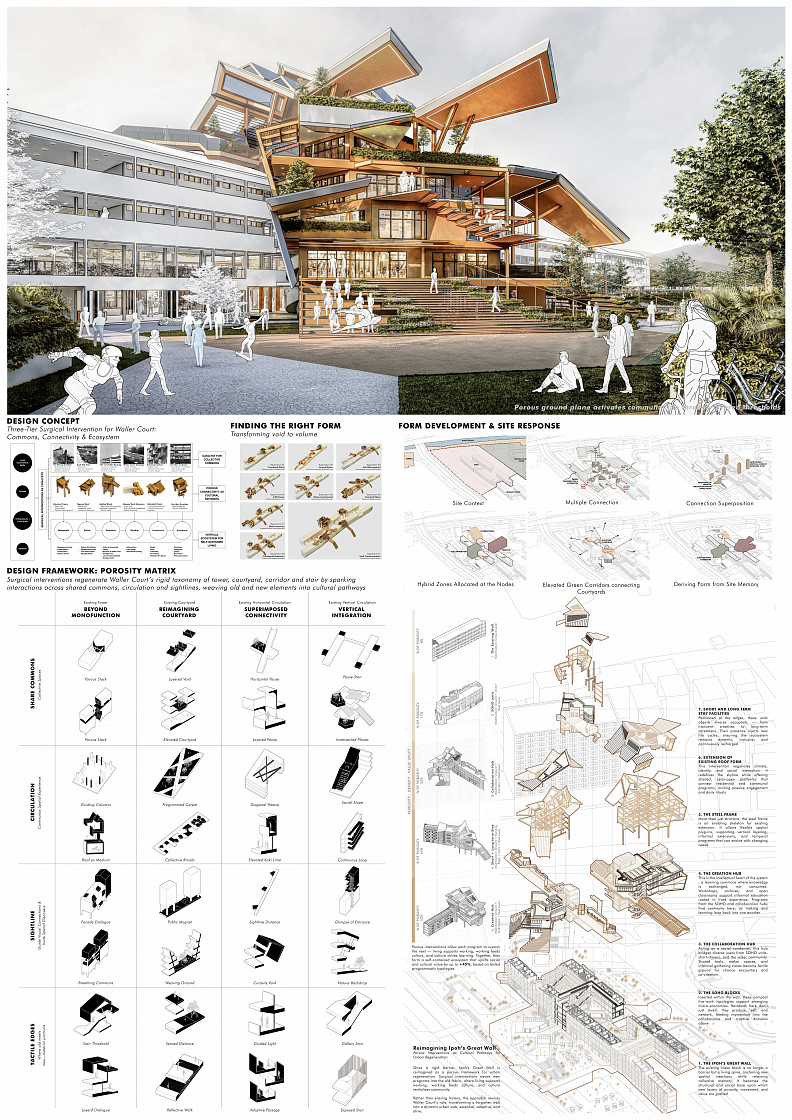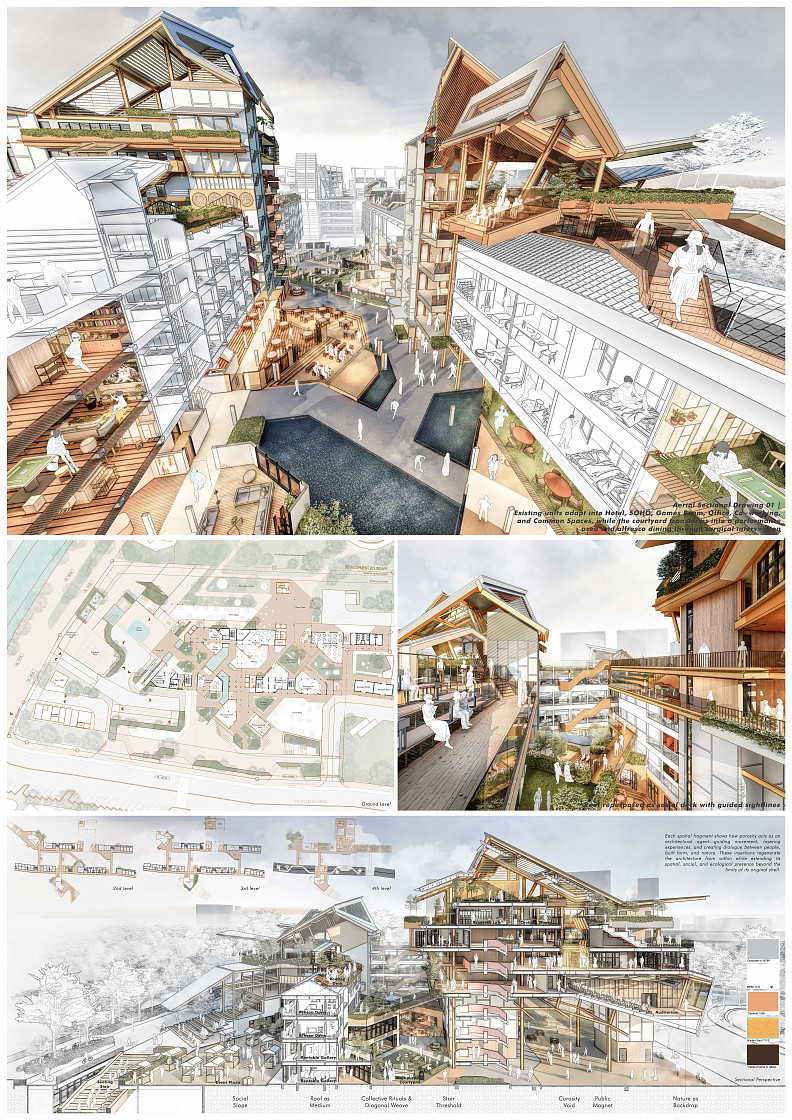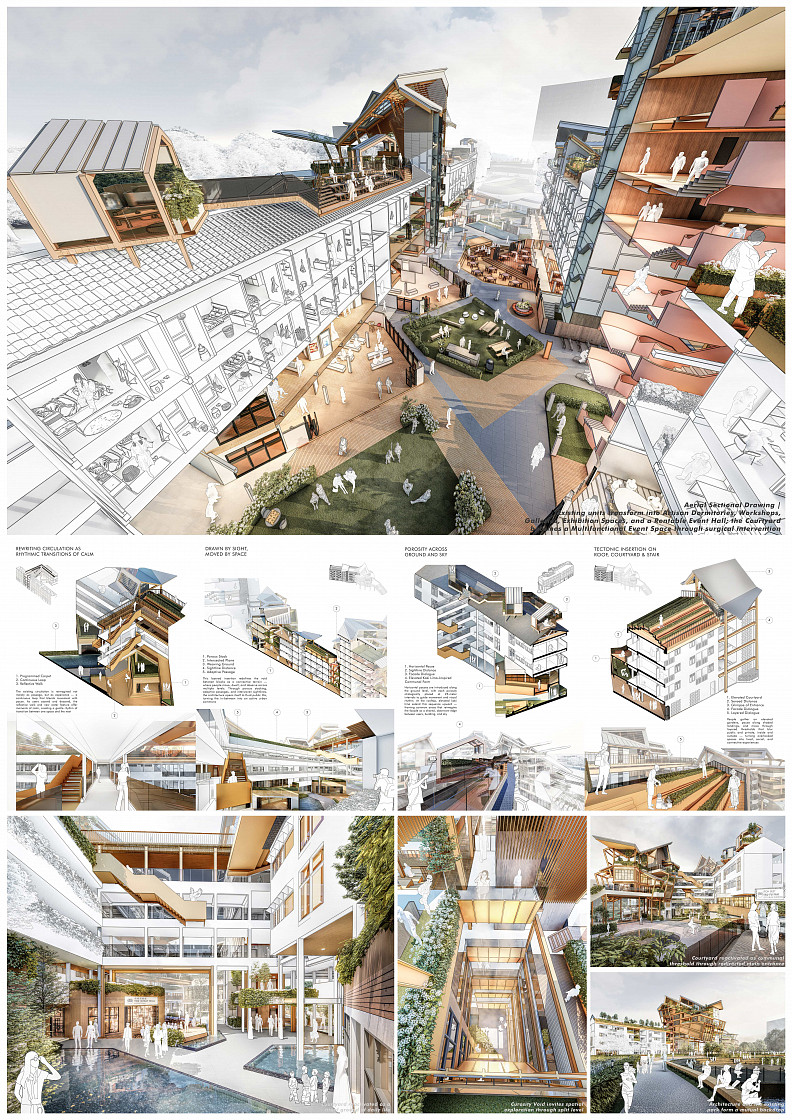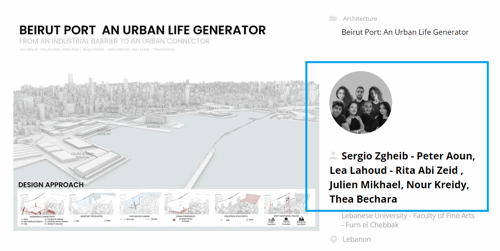THE GREAT WALL REIMAGINED

Idea projektu
Across Malaysia, aging public housing such as Waller Court in Ipoh—once celebrated as symbols of progress—now stand as neglected “Great Walls,” disconnected from their urban and social contexts. Built in the 1960s as a self-contained community, Waller Court now faces severe decline, with only 27% occupancy and looming commercial redevelopment threatening its erasure. Yet, its central location, spatial generosity, and layered communal memory reveal immense potential for renewal. Once a micro-city of homes, small businesses, and shared courtyards, its dormant framework now calls for reactivation.
Popis projektu
The design introduces three tiers of surgical interventions. First, collective commons are seeded within the flat to reactivate community life. Second, porous connections are embedded into the existing wall to dismantle its monolithic rigidity and create new cultural pathways. Third, a vertical ecosystem of cultural, social, and ecological programs is layered to shape self-sustained living. Together, these targeted yet transformative insertions regenerate Waller Court from within while extending its influence into the wider city fabric.
At the heart of the framework is the Porosity Matrix, where porosity operates as an architectural agent. Spatial fragments and insertions are designed to guide movement, layer experiences, and open dialogues between people, built form, and nature. Corridors transform into active commons, courtyards into multifunctional grounds, and vertical voids into conduits for light, air, and ecological presence. This porosity matrix redefines Waller Court from a closed wall into a permeable cultural hub — accessible, collaborative, and adaptive.
Form development begins with mapping the site context, followed by creating multiple connective layers linking Waller Court to its surrounding precincts. These are superimposed to generate hybrid zones at nodal points of the wall, where cultural, social, and ecological exchanges naturally occur. Elevated green corridors stitch together existing courtyards, transforming them into interconnected communal landscapes that soften the block’s rigidity. The roof form emerges as a reinterpretation of the original silhouette — extended into a porous canopy that anchors memory while opening new spatial possibilities for the future.
Programmatic strategy follows the logic of surgical interventions. Former housing units evolve into artisan dormitories, workshops, galleries, co-working offices, and rentable event halls. At the heart, the courtyard transforms into a multifunctional cultural ground — capable of hosting performances, markets, and festivals. This layered program uplifts Waller Court’s social and cultural value, redefining it as a Creative and Collaboration Hub. Supported by the porosity matrix, circulation becomes fluid, spaces become adaptable, and the building evolves into both a cultural anchor and a self-sustaining ecosystem.
Technické informace
The new interventions employ a timber-alike steel structural system that integrates seamlessly with the existing concrete frame. This lightweight yet robust system enables vertical and horizontal extensions without overloading the old structure. It is designed to be modular and reversible, allowing future adjustments and minimizing demolition waste. The façade retains the character of the existing plaster-and-paint wall, maintaining Waller Court’s familiar visual identity while introducing a refined, breathable layer of shading and natural ventilation. Exposed structural elements celebrate the contrast between the old and the new, illustrating how adaptive reuse can achieve renewal without erasure
Sustainability in Waller Court is rooted in design, not decoration. Adaptive reuse of existing structures preserves embodied energy and reduces demolition waste. Porosity naturally channels wind and daylight, lowering dependence on mechanical cooling and lighting. Timber-like lightweight structures extend flexibility, enabling growth while minimizing environmental impact. Here, green is not an applied aesthetic but a framework where architecture, ecology, and adaptability intersect, ensuring the Great Wall grows responsibly into the future.
